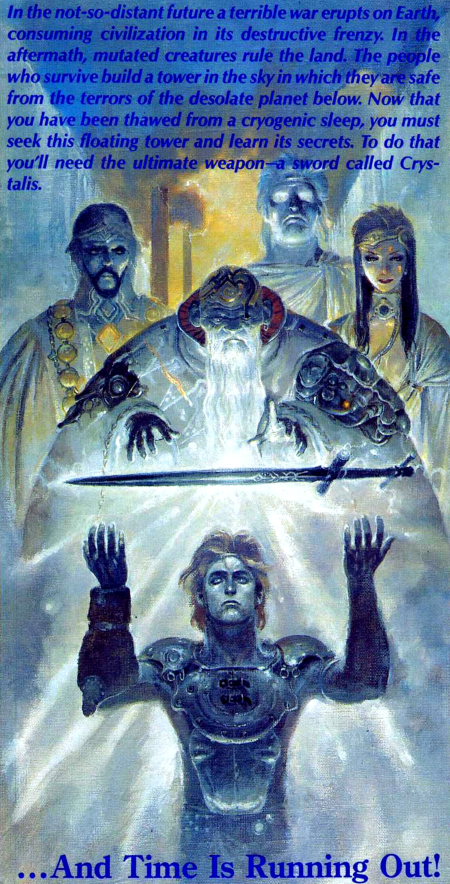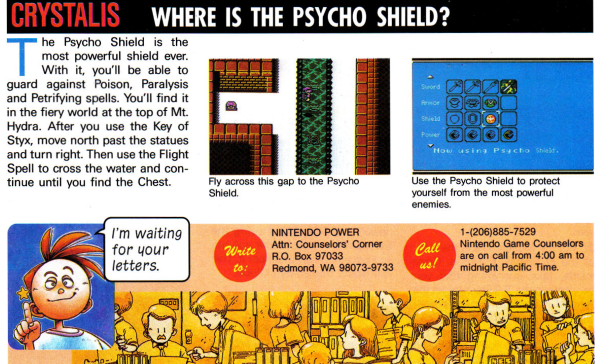Perhaps kids like me were to blame. I certainly don’t remember Crystalis as a staple of grade-school Nintendo discussions; we never analyzed, debated, and fought over it as we might Super Mario Bros. 3 or Mega Man 2. Nor was it one of those games everyone owned but hated and never played, like The Adventures of Bayou Billy or Milon’s Secret Castle. Crystalis had a TV commercial and some favorable reviews, but as far as I could tell it didn’t break into the collective unconscious of young Nintendo nerds. I wouldn’t even buy it until it was twenty bucks at Kay-Bee.
I discovered Crystalis slowly and primarily through Nintendo Power. It wasn’t the initial coverage that hooked me. The magazine ran good-sized features for the game’s mid-1990 release, with gorgeous art possibly by Katsuya Terada, but I was much more interested in reading about Super Mario Bros. 3, Super C, The Mafat Conspiracy, Final Fantasy, Ninja Gaiden II, Rescue Rangers, Maniac Mansion, and that second Ninja Turtles game that looked like the arcade deal and was therefore much better than the first one.
Hmm. Maybe that’s why Crystalis didn’t do huge numbers: competition.

It was a different section of Nintendo Power that sold me on Crystalis: the Counselors’ Corner.
Nintendo’s game counselor hotline was a major cog in the company’s market dominance, and even those kids who didn’t call it very often still thought the counselors had the coolest job on the planet. Nintendo Power promulgated that idea with Counselors’ Corner, a monthly feature that covered some of the more difficult or commonplace questions put to the call center.
Crystalis was a regular here. Counselors’ Corner fielded questions about it for months on end, covering everything from getting the Psycho Shield to defeating two sun-and-moon lion statues with, unsurprisingly, the Bow of the Sun and the Bow of the Moon. The solutions gave away a lot of the game’s more perplexing puzzles, which might have ruined the challenge.

Yet the opposite was true: spoiling pieces of Crystalis made the whole of it more interesting.
As with all things in Nintendo Power, this was a calculated pitch. Nothing drew kids in like learning the deeper mysteries of a game, and nothing made us more confident than knowing how to beat a boss or uncover a secret in something we hadn’t so much as played yet. And for a complex game like Crystalis, the extracted tips hinted at a bigger world and even greater mysteries. Why would casting a paralysis spell on every patron of a bar reveal the sage Kensu, and why would he be angry? Well, we’d just have to play Crystalis and see.
Nintendo Power did its job even when pulling back the curtain, and I knew I wanted Crystalis by the time I saw it on the discount rack. I enjoyed it thoroughly even though I already knew how to beat the disguised Sabera and get past the giant metal guardian wall in Goa. They were tests for which I’d spent months studying, and passing them was all the more satisfying for that.
Would I have liked Crystalis even more if I’d gone in completely unaware? I don’t think so. You can’t really spoil a good story, and there’s nothing like knowing a little of what lies ahead, even if it’s just where to find the Psycho Shield.

No comments:
Post a Comment